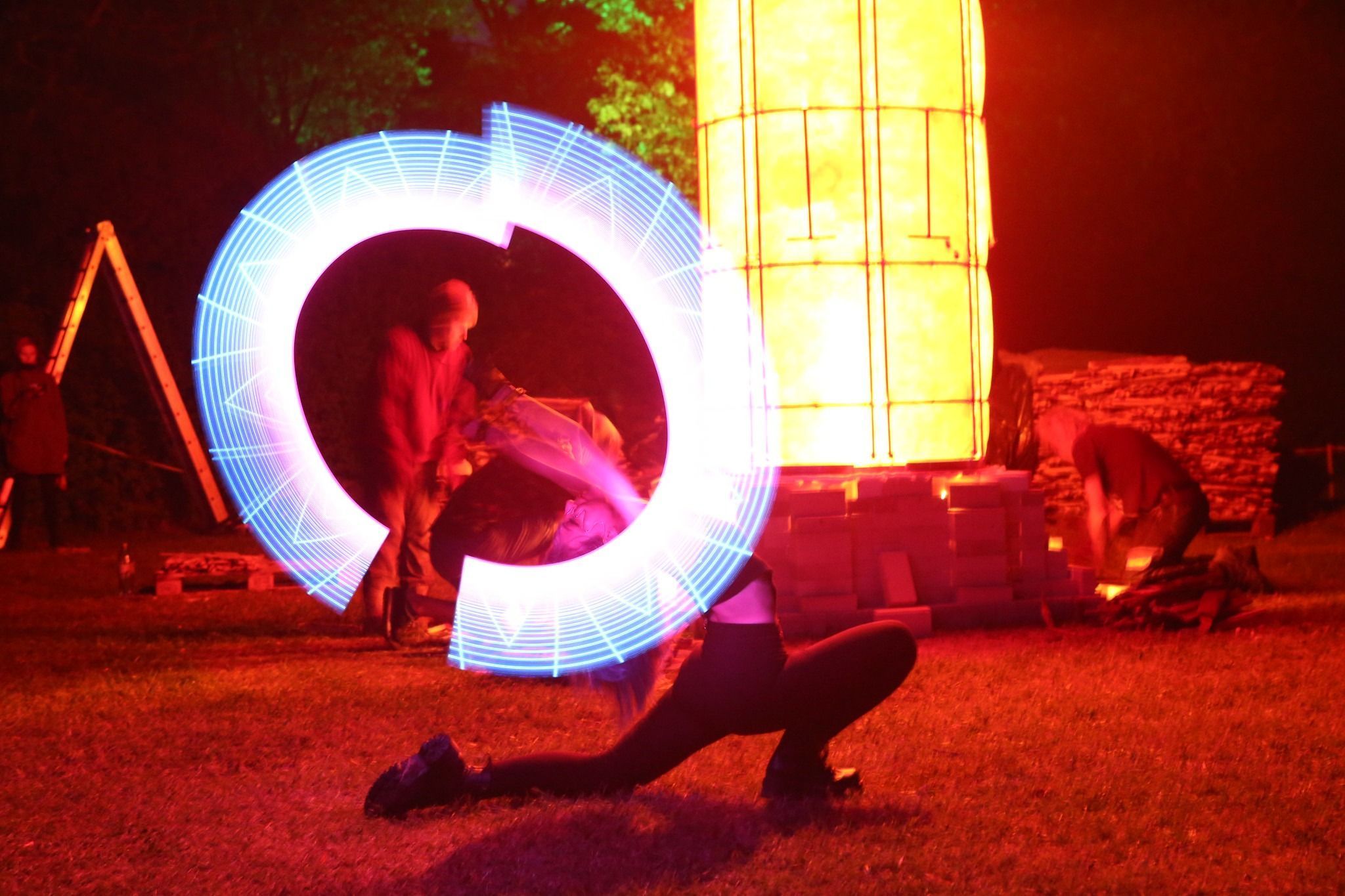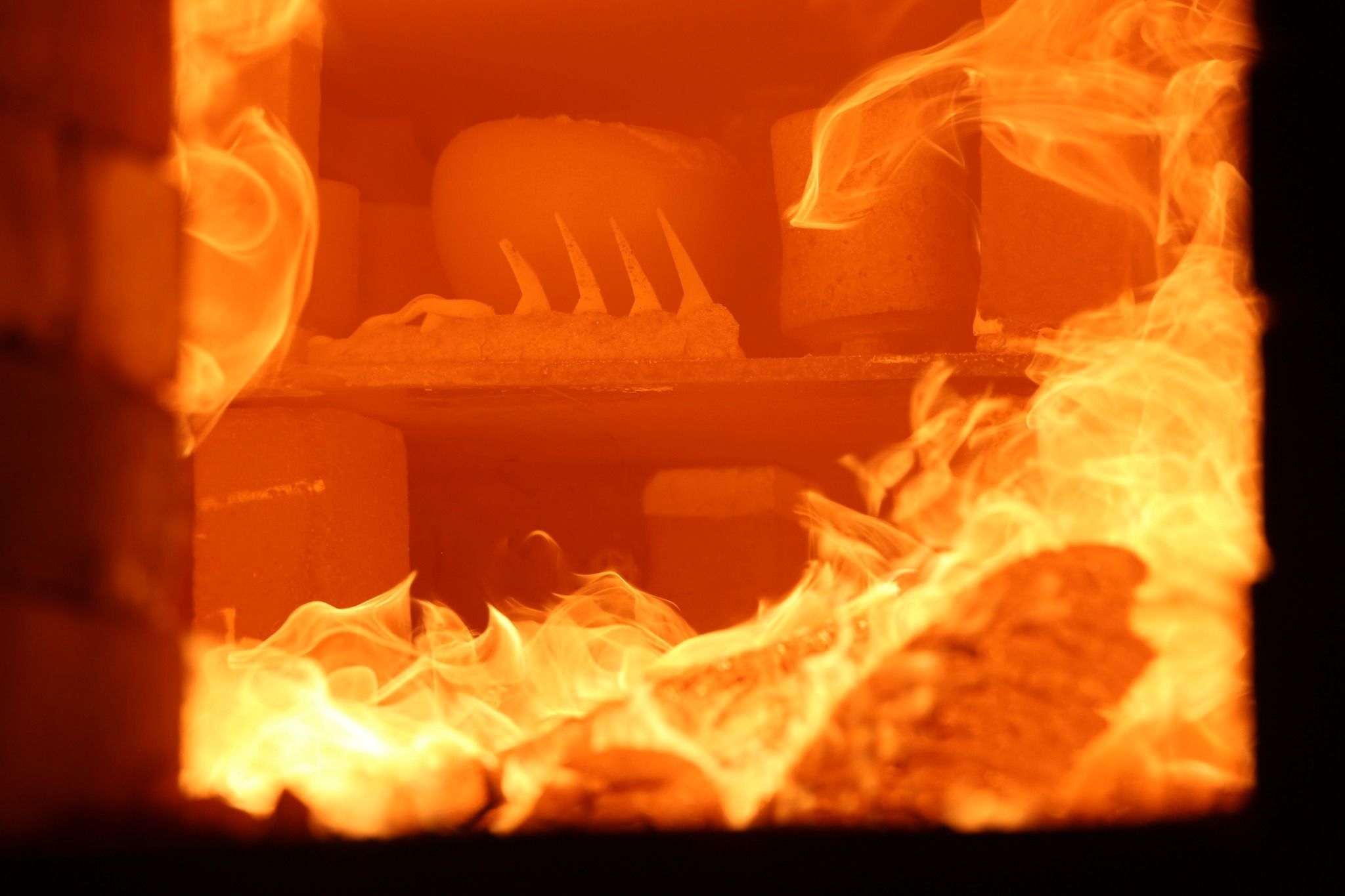2015 marks 15 years from the beginning of the Kohila International Ceramics Symposium in Estonia. All the symposia have been conducted in Kohila, at the Tohisoo Manor, and have centered on a unique anagama-type wood-burning ceramic kiln in the manor park, which is one of the largest of its kind in the Baltics. During the symposia, the participants produce large-scale ceramic sculptures, at least of which one is added to the collection of the Estonian Ceramicists’ Association. Thus, a unique collection of ceramic sculptures has developed during the last 15 years, which has considerably expanded the boundaries of traditional ceramics.
Enchanted by Fire at the Tallinn Art Hall introduces a selection made from the collection by curator Pekka Paikkari, in order to make people more aware of the existence of such a distinctive collection and of wood-firing as a credible means for the creation of contemporary art. According to the curator, this is an extraordinary ceramics collection, the like of which cannot be found in Finland, or the other Scandinavian or Baltic countries.
“Even today there are areas where clay as a basic material is unbeatable. Clay can insulate, clean water, and construct solid, durable elements. Anything from engine parts to fibers and tiles for space shuttles can be produced from ceramics,” curator Pekka Paikari lists the opportunities provided by contemporary ceramics. “Clay is a material that changes shape throughout the entire production process. Starting from soil it can be moulded into chosen shapes. Forming, shaping, shrinking, heating and glazing are the necessary steps in turning clay into ceramics. The techniques used are thousands of years old and still an important part of our modern existence.”
The ceramics symposium unites ancient wood-firing traditions and sculptures with modern forms. “Historically, wood-firing has been used mainly for producing household pottery, and this tradition is still alive today. However, some artists and internationally recognized ceramics centers also use wood-firing for producing sculptural ceramics. In this case, fire is the uniting element, a kind of bridge between ancient traditions and modern art,” Külli Kõiv from the Estonian Ceramicists’ Association explains.
Since 2001, 158 artists – both ceramicists and sculptors, artists who have achieved fame in their field and younger talents – from 25 countries have participated in the International Ceramics Symposium in Kohila that was started at the initiative of kiln master Andres Allik. The Kohila Ceramics Centre is highly regarded amongst specialists in the field and is an important link in the worldwide ceramics network. Every year at the symposium, the participants display their works at an open air exhibition; and every five years, some of the newest works in the collection are shown at a larger survey exhibition in Tallinn. Previous exhibitions have taken place at the Rotermann Salt Storage (2005) and the Knighthood Building on Toompea Hill (2010). In 2015, we are introducing the best works in the collection that have been created during the last 15 years.
Pekka Paikkari (1960) is a Finnish sculptor and designer. He has worked since 1983 at the Arabia ceramics factory as a designer and artist. He also collaborates with architects, and in 2015, he completed a 10-metre-high public sculpture for the Lampa House in Helsinki. Paikkari is a member of the Association of Finnish Sculptors and has participated in more than 200 exhibitions around the world.





